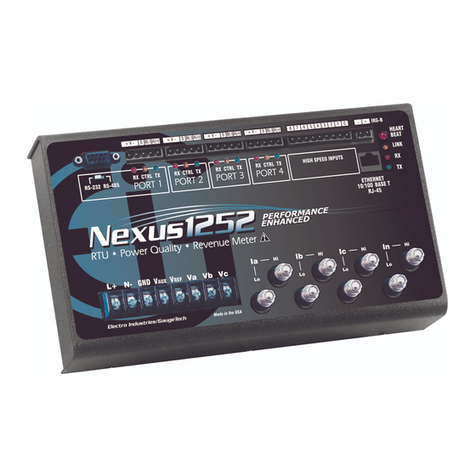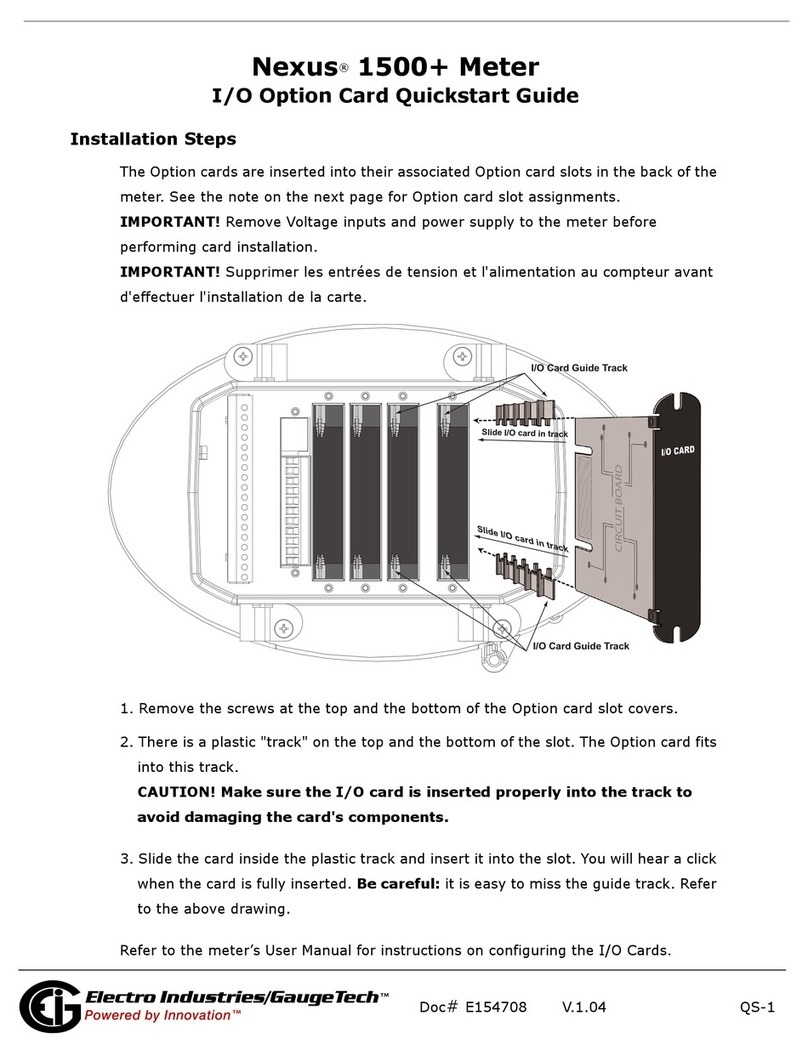Nexus® 1500+ Meter Quickstart Guide
Doc# E154714 V.1.07Q-1
Nexus® 1500+ Meter Quickstart Guide
CAUTION! Installation of the Nexus® 1500+ meter must be performed only by qualified
personnel who follow standard safety precautions during all procedures. Those personnel should have
appropriate training and experience with high voltage devices. Appropriate safety gloves, safety glasses
and protective clothing are recommended.
During normal operation of the Nexus® meter, dangerous voltages flow through many parts of the unit, includ-
ing: Terminals and any connected CTs (Current Transformers) and PTs (Potential Transformers), all I/O Modules
and their circuits. All Primary and Secondary circuits can, at times, produce lethal voltages and currents. Avoid
contact with any current-carrying surfaces.
Do not use the meter or any I/O device for primary protection or in an energy-limiting capacity. The meter can
only be used as secondary protection.
IMPORTANT! Refer to your meter’s Installation and Operation Manual for additional safety warnings before
performing installation, wiring, or maintenance of your meter. See the link to the manual, below.
NOTE: This Quickstart Guide gives basic installation, wiring, and programming instructions. For additional meter
operation and programming information, refer to your meter’s Installation and Operation Manual and the
Communicator PQATM, MeterManagerPQATM, and EnergyPQA.comTM Software User Manual on EIG’s website:
User Manual:
https://www.electroind.com/products/nexus-1500-power-quality-meter-with-phasor-measurement-unit/
From the webpage, click Technical Documents>User Manual.
Software Manual:
https://www.electroind.com/products/communicatorpqa-power-monitoring-software/
From the webpage, click Technical Documents>User Manual.
CommunicatorPQATM Setup Software:
https://www.electroind.com/products/communicatorpqa-power-monitoring-software/
From the webpage, click Download ComPQA Pro. To get a Professional license for the software, email
All EIG’s metering and software products’ literature can be accessed from:
https://www.electroind.com/power-metering-products/
For software and metering integration, EIG’s Technical Support Engineers are available on an hourly or daily basis to
help with typical commissioning assistance, which includes:
•Verifying meter installation and wiring.
•Verifying proper system integration.
•Working with 3rd parties to ensure cross compatibility.
•Advising users on best practices for optimal implementation.
You can reach Technical Support from 8 a.m. to 8 p.m. EST, Monday-Friday, at 516-334-0870.





























